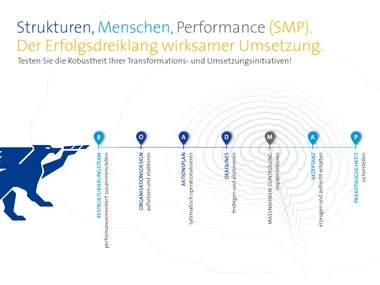Our SMP7 brochure
Effective performance management and targeted performance monitoring via promoters, people, project and problem-solving focus together reliably ensure that change intentions become implementation successes. A detailed description of our "Performance Cycle/Performance Radar®" can be found in the current SMP7 brochure.







